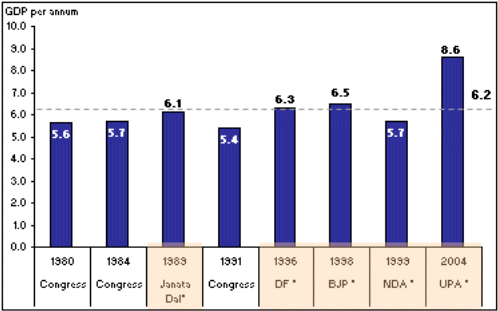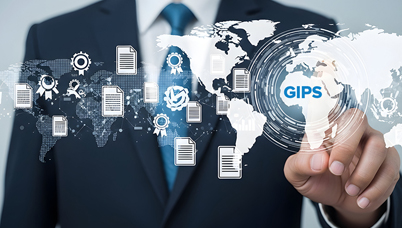Fog on a rainy day - Forecasting the Tough Year 2009 Amidst Economic Downturn
Posted On Sunday, Jan 01, 1950
Forecasting what is likely to happen in calendar year 2009 is a tough proposition.
We are driving in heavy rain -and there is a dense fog all around us.
Looking back at where I pictured the world to be - and India within it -I can say this with certainty: where I had imagined we would be in December 2007 is not wherewe are in December 2008.
And it is not a pretty picture: every sector within the stock market has taken a beating, some less like FMCG-12.6% and some more like Real Estate -81.9%. What a difference fromthe scorching performance of the year 2007.
Fromgreed to bust
While I did expect business models built on greed and irrationality to crumble - and hedge funds and derivatives to be risks to the system - we did not expect companies like Bear Stearns, Lehman, and Merrill would implode. Or that banks and insurers like AIG, Fortis, RBS, Wachovia, and Washington Mutualwould themselves collapse.
To us, the aggression of some of these "new age" banks was a threat to the Indian banking system. Banks are meant to make money on the loans they give, not brag about how large their loan book has grown. Largeness is what people discuss in bars, not what heads of banks should advertise - or what film stars should endorse. While Indian bankswere saved from the horrors of insolvency and the global credit crises, name of a bank kept cropping up as the one in trouble. Luckily for all of us, itwas only a scare andwe survived this scare - aswe have survived past scares.Maybe a more chastened bank management’s will learn from its past mistakes and behave more like a bank.
Secondly, while I did expect the US economy to be in a recession, I predicted the Indian economywould be largely sheltered from this. The jury is still out on this prediction. But, if the vote of the stock market counts, then the decision seems to be that India is very much coupled to the fate of the US economy. The battering of the Indian stock markets is in line with its global peers, such as Brazil, China and Russia which were lower by -55%, -62% and -72% respectively. Thatwas notwhatwe had expected. And, finally, while we were frightened by the prospect of short term capital flows that had entered India via the P-Notes and was concerned what their "unwinding" could do to share prices;wewere taken aback at the extent of the relentless unwinding. Foreign "investors" have been net sellers of Indian stocks for 154 out of 243 trading days in CY 2008. For the year, they were net sellers of USD 13.1 billion. Data from www.equitymaster.com indicates that FIIs have never been net sellers in any previous calendar year.
Offsetting thewrong views withsomeright ones
But not allmy predictionswere incorrect.We had our fair share of good calls on other asset classes. We had liked gold (gained + 5.8% in USD and + 30.6% in INR) andwewere correct to be negative on the INR (declined -23.8% v/s the USD and -18.2% v/s the Euro).
We felt oil prices were too high and defied the fundamentals. Oil continued to climb and peaked at USD 146.93 per barrel in July, 2008 but finally ended atUSD35.35 per barrel;down-75.9% for the year. And we thought real estate prices were too high - they still refuse to collapse but they are falling for sure.
We also believed that the share prices of real estate companieswere too high - the sector is down -85.4% for the year.
The prices of commodities - steel, rice, wheat - had also risen excessively,we opined, theywould decline. Happily, they have all headed south.
Acase of awrong asset allocation
Though we had these very good "calls", the net results show thatwewere caught in the floods. While we were not washed away, we were not able to stay completely dry on our island of rationality.
At the start of the year 2008,my suggested asset allocationwas:
Table 1 - Suggested allocation in Quantum Mutual Funds
| Quantum Long Term Equity Fund | Quantum Gold ETF | Quantum Liquid Fund | |
| Why you should own it: | An investment for the future and an opportunity to profit from the long term economic growth in India | A hedge against a global financial crisis and an "insurance" for your portfolio | Cash in hand for any emergency uses but should get better returns than a savings account in a bank |
| Suggested allocation | 80% | 15% | 5% |
The high allocation to equitieswas a terrible call.
By the end of September 30, 2008 an investment in my recommended asset mix would have caused a loss of -24%.
By October 8th-jarred by the collapse of Lehman Brothers on September 15th and the complete freeze in the credit markets -I suggested a newway to look at the world.
And at a new way to look at one’s investment portfolio - whatwas left of it, that is.
My advice was: Review your need for "safe cash"-the amount of money you need every month to maintain yourminimumlifestyle.
Figure out your risk tolerance and your ability to live with uncertainty.
While the central banks of the world - and the governments - are printing money, there is no guarantee that their efforts will have any immediate success. The world economy may recover but it could sink further before it comesout of its troubles.
I am an optimist - an ingrained characteristic of any equity investor - and believe in a better future.
But no one knows when this economic recovery will happen. Itmay be in calendar year 2009, 2010 or 2011.
So, depending on your ability to withstand turbulence and uncertainty, itwould be a good idea to keep enough money with you to pay the bills to maintain your lifestyle for "some time". That time period can vary anywhere from6months to 24months.
You can achieve this by not putting any of your savings into any investments for a while. This means that - from your monthly savings - you do not invest in stock markets. Automatically, your "allocation" to cash will increase. You may also elect to sell some of your investments - even at a loss - to build your reserve to your preferred level of "safe cash" to maintain your present lifestyle. And then add back to your investment kitty every month as you get your salary and monthly earnings.
Once you have kept your "safe cash" aside (the 6months to 24 months of lifestyle spending), then invest the balance of your money in stock markets (80%) and gold (20%).
That advice on "asset allocation" was given in October, 2008. At the outset of CY 2009, there is nothing to indicate that you need to change that.
Outlook for CY 2009: I can’t see clearlynow
While global stock markets, including India, have recovered from their lows - the outlook for the world economy is still uncertain.
At the start of CY 2008, the Indian economy was plagued by high oil prices, high commodity prices, and high employee costs - along with a shortage of skilled labour. As we begin CY 2009, India has the advantage of lower oil and commodity prices - and a more stable labour pool that can be relied on to contribute to the growth of companies. Though I remain optimistic on the ability of the Indian economy to grow at 6.5% every year at an average, we have our own uncertainties.

Despite a consistent record of strong GDP - probably second only to China’s growth - India is caught in its own tangles of bureaucracy, corruption, a lack of infrastructure, and mostly self-serving politicians. We need huge resources to improve the lives of the 400 million poor people in this country and few have worked out the cost - or the benefits - of building this India.
The continued terrorist attacks on Indian soil - there were 34 terror attacks in India - continues to expose the corruption and the inefficiency of the political and bureaucratic system. While mad terrorists with a desire to die can never be stopped, the ease at which they can terrorize is what is terrifying.
On the business side, Indian entrepreneurs have done well despite having a government, not because these entrepreneurs work in a supportive government framework. Most ministers who set policies are influenced by lobbies, not by a selfless national goal. And it is this lobbying that allows many socially destructive Indian business houses to thrive. They live off their political connections and political blessing.
And there continue to be managements - everywhere in the world, including India - who will be happy to take advantage of bad laws or the silence of investors to further their private wealth, at the cost of the larger shareholder base. There were 2 notable such events last year: Ranbaxy and Satyam. The government, as a majority shareholder in many PSU entities, is also guilty of using many listed companies to further its political objectives - and putting the price tag on the silent, minority shareholders. Expect more theft.
But the "India risk" remains - as it has for over 40 years - and you need to continue to navigate your investments in this environment.
The long-term GDP growth numbers will eventually show up in company profits - and in stock market performance. Though in the near term the stock markets - like the alerted cobra struck on its head by the snake charmer - are likely to be mesmerized by the flows of foreign capital and movements of the global stock markets. Note that fact, but don’t let it determine your (or your fund manager’s) investment actions.
Table 2: India outperforms MSCI Indices and will continue to attract capital over the long term
| 2001 | 2002 | 2003 | 2004> | 2005 | 2006 | 2007 | 2008 | ||
| Foreign buying | (USD bn) | 2.8 | 0.8 | 6.9 | 8.96 | 10.9 | 8.0 | 17.2 | -13.1 |
| BSE 30 Index | (INR) | -17.90% | 3.5% | 72.9% | 13.1% | 42.3% | 46.7% | 47.1% | -51.8% |
| BSE 30 Index | (USD) | -20.5% | 4.1% | 81.8% | 18.7% | 37.3% | 49.3% | 65.2% | -60.1% |
| MSCI Emerging Market Free | (USD) | -4.9% | -8.0% | 51.6% | 22.4% | 30.3% | 29.2% | 36.5% | -53.5% |
| MSCI World | (USD) | -17.3% | -20.5% | 31.6% | 13.3% | 8.8% | 18.8% | 9.6% | -41.9% |
In conclusion
The speed with which the Indian stock markets recover - and decouple from the global markets - will be a function of how quickly we sort out our own "Made-in-India" problems.
Despite these uncertainties, we need to go through the exercise of "asset allocation" to understand how best to position our investment portfolios. And, if there are unexpected changes of significance as the year unfolds (as there were last year), then we need to factor those new unforeseen events and make the necessary changes in our investment portfolios.
For the moment, keep your mind at ease by keeping aside enough cash - and split any balance you have in an 80:20 ratio for investments between equities (individual stocks, equity mutual funds, and tax-saving equity mutual funds) and gold.
| Asset class | View for CY 2009 |
| "Safe Cash" | Keep some money aside to look after your needs for many months - you need to decide how many months gives you mental comfort |
| Equity | Invest, but no clarity on when markets will turn - a lot of the bad news is priced in, but there could still be more bad news and it is unlcear when the good news will flow in - but equities remains the best long term place to invest |
| Real Estate | This will crack - big time! Then buy the house you wanted. |
| Gold | Keep buying, it is a great hedge just in case the world stays in trouble - or inflation gathers steam |
| Indian Rupee | Will shuffle +/- 2% against a basket of Euro, USD, Yen, Pound - no dramatic moves like in CY 2008 |
| Commodities | In general, a good time to start buying on a 2 to 3 year view - but you have time to make your purhcases |
| Fixed income | Don’t lock in your money because of high interest rates being offered - investing in equity and gold may be better. |
Related Posts
-

Understanding GIPS: The Global Standard for Performance Reporting
Posted On Wednesday, Jan 14, 2026
In the world of investing, everyone loves a good performance number.
Read More -

Equity Monthly for January 2026
Posted On Friday, Jan 02, 2026
Indian markets remained range-bound in 2025
Read More -

Gold Monthly for January 2026
Posted On Thursday, Jan 01, 2026
Gold Market Review and Outlook: 2025–2026
Read More




